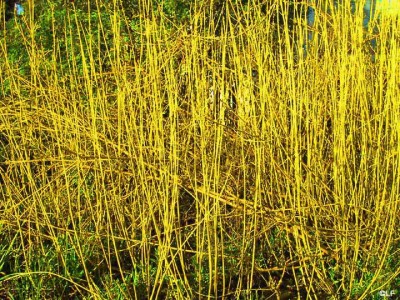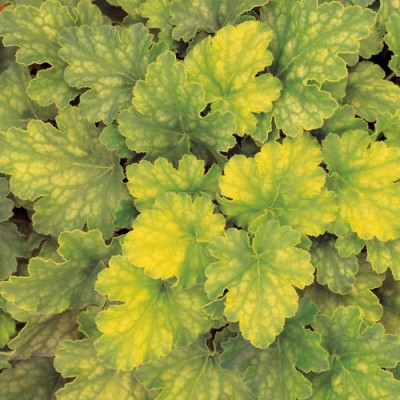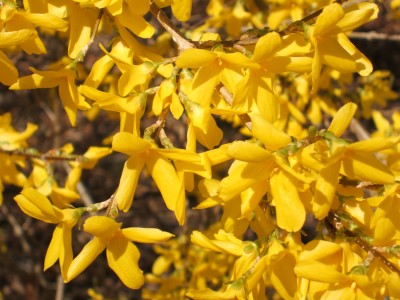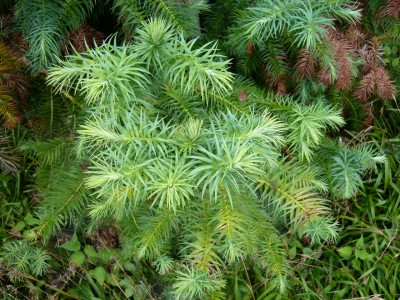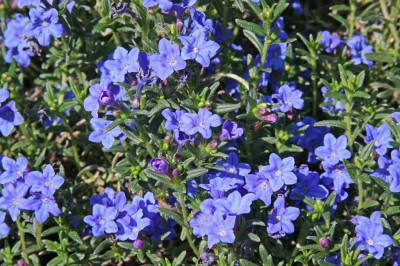Cool Plants
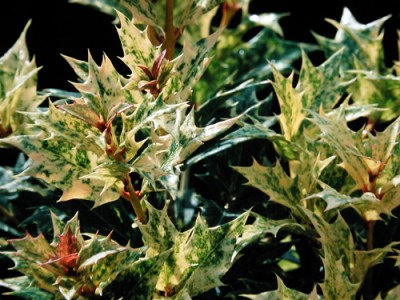 Osmanthus heterophyllus ‘Goshiki’
Osmanthus heterophyllus ‘Goshiki’
Osmanthus heterophyllus ‘Goshiki’ is a compact and mound-forming evergreen that reaches up to 3 1/2 feet tall and about 3 to 5 feet wide. The leaves are tinged with pink when young and dark green with creamy yellow splotches when mature. The tiny white flowers are extremely fragrant, hidden amongst the leaves, blooming between early and late fall. The fruits are seldom borne under cultivation, not showy. They prefer moist and well drained, acidic soil but are fairly adaptable. They don’t seem to suffer from many pests. Great plant for borders, screens and hedges, as it is quite spiny it can be a useful barrier planting.
Cornus sericea
Bring interest to the winter garden with this Dogwood’s yellow twigs that stand out against the dark landscape. Plant in a stand or use singly as contrast to neighboring plants. Keep the outstanding stem color by cutting down the stems in early spring to make room for new growth. Yellow twigs brighten up winter days and are a good contrast to the light green branches of Double Flowered Kerria (Kerria japonica ‘Pleniflora’). Plant with other moisture-loving companions such as Fanal Astilbe (Astilbe x arendsii ‘Fanal’), with its garnet blooms that contrast with the yellow stems, or Variegated Broad-leaved Sedge (Carex siderosticha ‘Variegata’) with its creamy edged leaves.
Viburnum tinus
‘Spring Bouquet’
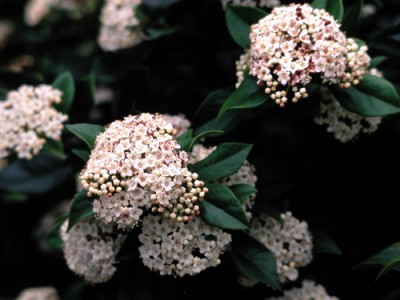
This versatile evergreen shrub is truly easy to grow. Dark green foliage offsets the fragrant white blooms in late winter and spring as well as the metallic blue berries in summer. Growing in sun to shade, ‘Spring Bouquet’ is an excellent addition to the mixed shrub border or used as a low screen.
Heuchera ‘Key Lime Pie’
Are you a Hosta? Hosta, Hosta, Hosta. Enough, already. So to raise awareness, weve launched a PR campaign Dolce Heucheras: The Other H Plants. Dolce are the aristocrats of Heucheras (coral bells). As the Spokes-Heuchera, I say we start with me. My mounded, 8-16 inch clumps of scalloped, heart-shape leaves are veined and mottled in shades of bright lime green. These colors deepen and intensify in cool weather and my foliage keeps its looks all winter. In spring to summer, long, erect flower spikes of tiny, bell-shaped pink flowers rise as many as 10 inches above my leaves where they remain for weeks.
Hebe odora
‘New Zealand Gold’
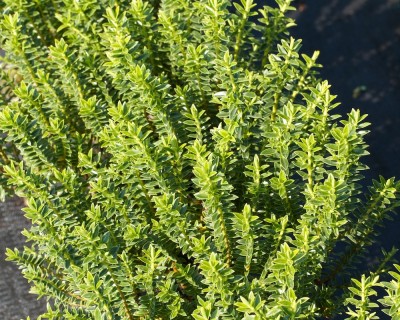
Hebe odora ‘New Zealand Gold is a wonderfully rounded, neat, evergreen shrub, usually grown for its dark green stems of slightly glossy leaves. It forms a neat rounded mound, more squat than tall. The foliage remains dense and tidy even if this plant is not trimmed. If conditions are right the foliage adopts dolden hues. Hebe ‘New Zealand Gold’ will tolerate clipping and makes an excellent small hedge (and good alternative for Buxus). It rarely flowers, though occasionally develop small pinkish-white flowers.
Forsythia ‘Kumson’
The brilliant golden flowers of forsythia herald the arrival of spring and bring the promise of yet another new gardening season. There’s a special reassuring quality about seeing the first flowers of the year – the certain knowledge that the dreary winter weather will soon be behind us and the excitement of another new season looms. Along with the swelling of buds, the bursting forth of growth, and gaiety of massed blooms comes the magical feeling that spring is here. It’s the time when the doldrums of cabin fever ease, gardeners’ hearts beat a little faster, and green thumbs positively begin to twitch!
Cunninghamia lanceolata is an evergreen coniferous tree with a columnar, upright habit with drooping branches. The leaves of the tree are softly spined, leathery, stiff green to blue green in colour and are needle like, whilst being spirally arranged. The tree is monoecious, the pollen cones are small and inconspicuous and produced in May. The seed cones are green initially, turning brown with age. The bark is dark grey to reddish brown, longitudinally fissured , then cracking into irregular flakes and exposing an aromatic, yellowish or reddish inner bark.
Lithodora ‘Grace Ward’
This blue mat-like perennial looks gorgeous around rocks and landscape boulders. Use at the top of retaining walls or to soften unsightly curbs. Like a groundcover, it spreads over a very large area. Great on slopes, berms and banks to offer both color and erosion control. Though it’s ideal for the traditional rock garden, it’s also a natural in the Mediterranean landscape.
Please note that we’ve updated our newsletter format. You may navigate through this newsletter by clicking on the page numbers below.

